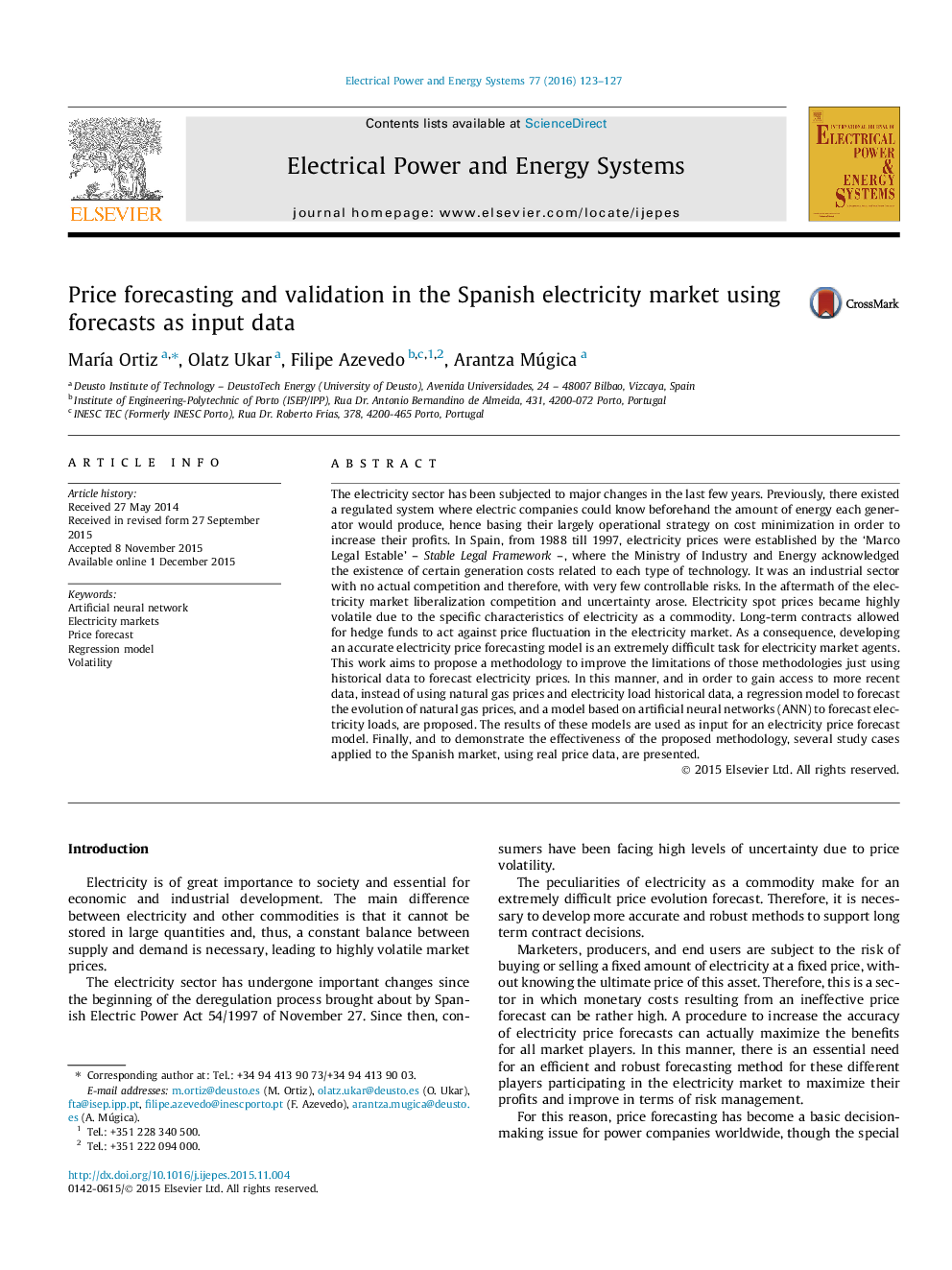| Article ID | Journal | Published Year | Pages | File Type |
|---|---|---|---|---|
| 399315 | International Journal of Electrical Power & Energy Systems | 2016 | 5 Pages |
•We propose a hybrid methodology to forecast electricity prices.•We select the most important input variables in the electricity price formation.•A good forecast will reduce the uncertainty in electricity markets.•Selecting the correct variables will increase the accuracy in predictive model.
The electricity sector has been subjected to major changes in the last few years. Previously, there existed a regulated system where electric companies could know beforehand the amount of energy each generator would produce, hence basing their largely operational strategy on cost minimization in order to increase their profits. In Spain, from 1988 till 1997, electricity prices were established by the ‘Marco Legal Estable’ – Stable Legal Framework –, where the Ministry of Industry and Energy acknowledged the existence of certain generation costs related to each type of technology. It was an industrial sector with no actual competition and therefore, with very few controllable risks. In the aftermath of the electricity market liberalization competition and uncertainty arose. Electricity spot prices became highly volatile due to the specific characteristics of electricity as a commodity. Long-term contracts allowed for hedge funds to act against price fluctuation in the electricity market. As a consequence, developing an accurate electricity price forecasting model is an extremely difficult task for electricity market agents. This work aims to propose a methodology to improve the limitations of those methodologies just using historical data to forecast electricity prices. In this manner, and in order to gain access to more recent data, instead of using natural gas prices and electricity load historical data, a regression model to forecast the evolution of natural gas prices, and a model based on artificial neural networks (ANN) to forecast electricity loads, are proposed. The results of these models are used as input for an electricity price forecast model. Finally, and to demonstrate the effectiveness of the proposed methodology, several study cases applied to the Spanish market, using real price data, are presented.
